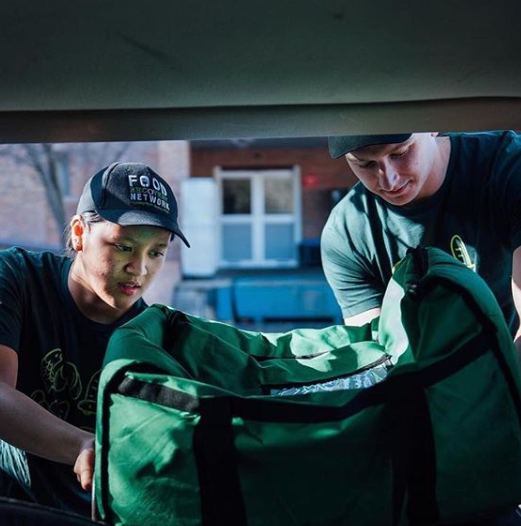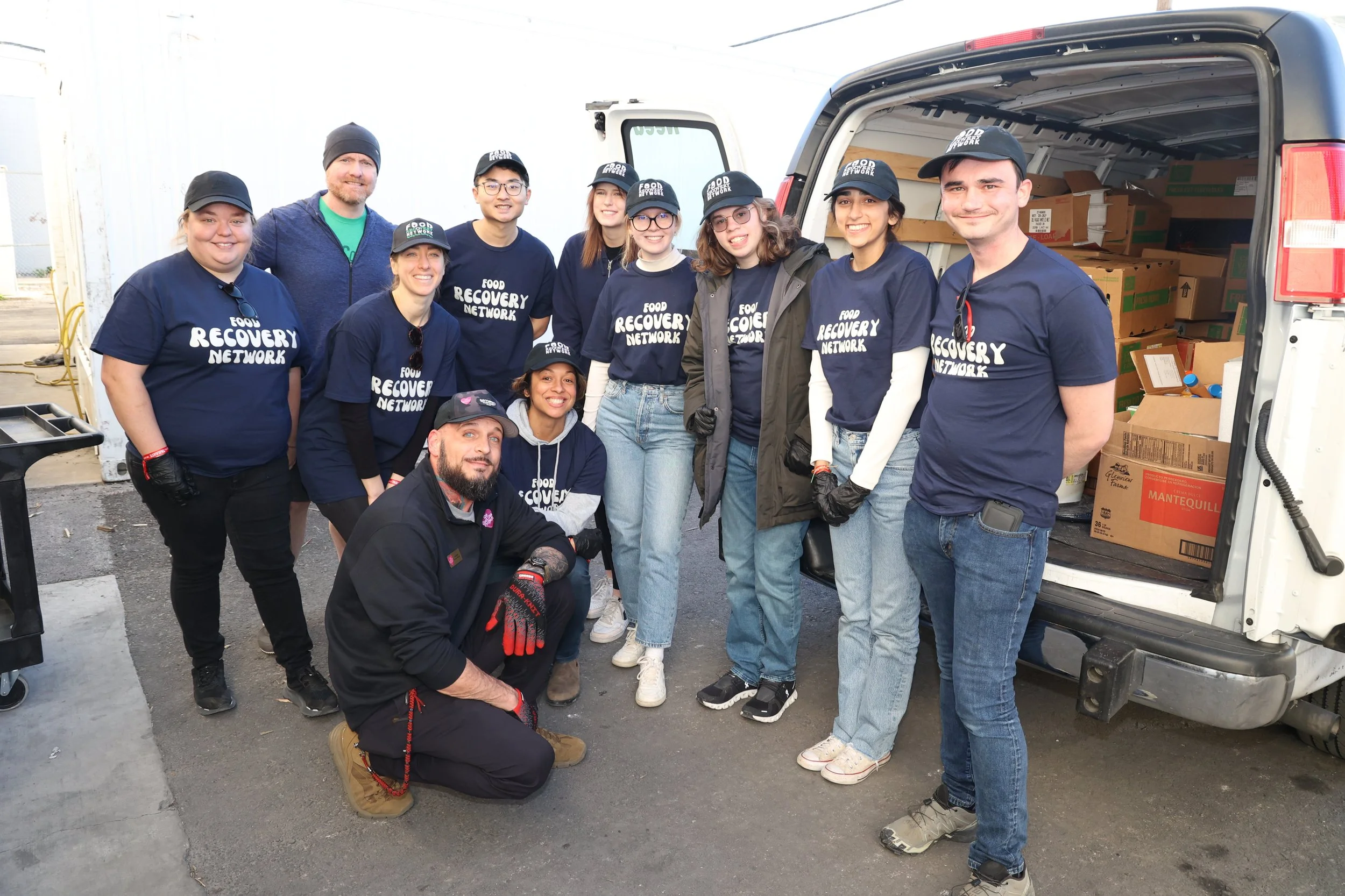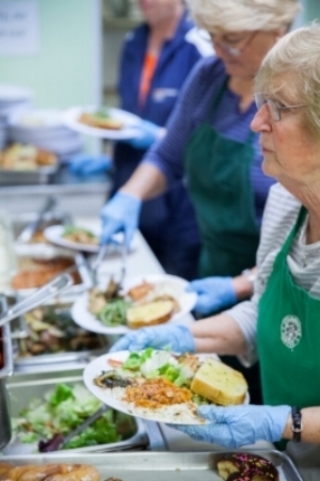One of the many perks of living in Washington, DC is being a stone's throw away from New York City, which is home to a myriad of conferences and events centered around the new food movement. On October 3rd, I was able to make the hop to the Big Apple for Food Tank’s second annual Summit in NYC - focused on food loss and food waste. It was a day filled with food movement heavyweights including Haile Thomas of HAPPY; Dan Barber of Blue Hill; and representatives from the NRDC, Feeding America, and ReFED.
A prominent national non-profit, Food Tank has filled a necessary role in the new food movement serving as a think tank and incubator around food. They elevate ideas and innovations that will move our food system into a new era: a reorganization of our food system to provide nutrition for those in need and the millions more who will join the planet as our population continues to grow. A vital component of this is ensuring that the new proposed systems are just; prioritizing and honoring the cultural heritage of food and its growers, eradicating food deserts in urban areas, and further managing our excess food and waste in a way that is social and environmentally sound.
The summit was brimming with diverse ideas and thoughtful insights. However, as the new food movement begins to solidify and take shape, some contradictory ideas are starting to compete for space to be heard and valued. Sentiments ranged from chef Marco Canora wanting to increase the value of food to prevent waste: “I really think everyone needs to spend more money on food,” to Sheryll Durrant, a non-profit organizer, who thinks that “[disadvantaged communities] shouldn’t pay for their food- it’s a resource that keeps us alive.” There was also conflict around where to spend energy innovating. Brad Nelson, from Marriott International, sees the need to “[raise] awareness that this is a food recovery problem, not a food cost problem [in the restaurant industry].” In contrast to Marion Nestle’s views, a NYU Professor, that food recovery operates as a secondary parallel food system to our primary one, and believes this should be changed through politics.
Representing FRN, I was most excited for the panel on “Improving Food Recovery.” The panel was incredibly well represented with a diverse range of key players; the NRDC, a local NYC Food Pantry, Global Alliance for Improved Nutrition, a local food recovery non-profit: New York Common Pantry, Feeding America, and ReFED. Here are four main takeaways I took from their food recovery discussion:
1. Increasing Awareness of Food Recovery
Karen Hanner, from Feeding America, said that the greatest challenge she faces with food recovery is simply awareness. She called for accountability from every player in the food supply chain to be aware of their waste and recognize that safe food recovery can happen at any step in the supply chain.
2. Healthy Food Donations and Distribution with Dignity
Andre Thompson, the Director of Food Programs at New York Common Pantry, spoke about the vital importance of healthy food being donated. His pantry primarily serves the Bronx and East Harlem, which have the lowest health indexes out of all of NYC’s counties. Many chronic conditions like diabetes and heart disease are linked to poor diet, and New York Common Pantry is trying to combat these health issues. “We are feeding stomachs, but we don’t want to feed the disease,” Thompson said. Most of the food that is served in their soup kitchen and pantry is rescued. Thompson stressed the importance of having strong enough relationships with donors to begin the conversation around healthy food donations: “It’s a very difficult conversation to have...we want to ensure the [food] we are handing off is nutritious.”
Thompson also spoke about upholding the dignity of the people who come to his pantry. One way to maintain that dignity is through choice. “We offer a choice pantry model, where you are able to place your order on a touch screen tablet, so you have a choice in selecting the food items [that are] going into your pantry package.”
3. Raising Food Waste on the Political and Corporate Agenda
Chris Cochran, the Executive Director of ReFED, spoke about how we can use metrics to help the food recovery movement. He emphasized how economic gains from tax incentives are a strong motivator for businesses to recover their food. Cohran contrasted that with economic burden of food waste, “When we look at this problem, it’s not just the percentage [of food wasted], it’s actually 218 billion dollars [wasted] in the US.” He also stressed the importance of tracking food waste data saying, “Measurement creates management.” Cochran gave a shout out to Spoiler Alert, a non-profit that helps companies develop food waste tracking software and form reduction and donation plans.
Bonnie McClafferty, from the Global Alliance for Improved Nutrition, talked about her experience convincing African governments to prioritize food waste reduction. She emphasized that discussing the health and economic benefits of food waste reduction helps to build a stronger coalition invested in this cause; “Food waste is coming to the agenda because of the economic issue in an agricultural economy, but also because of the global health issue.”
4. Improving the System through Innovation.
The most important takeaway from the panel was how beneficial idea sharing and innovation can be. The key classes of innovation are technology, focusing on the consumer, and earned revenue models.
Technology. ReFED currently tracks 500 companies in the business world for the innovations it is producing, 100 of which Cochran says are squarely in the food sector world. He highlighted the launch of Uber Freight -a hauling service - and how that new technology could be a potential partnership with Feeding America.
Consciously Redesigning the Food System. McClafferty gave an example from her work in Nairobi where food distribution is designed with the consumer in mind. On the outskirts of the Kibera slums there are milk ATM machines, which will depense milk for a fixed monetary rate. That way, if an individual does not have the ability to refrigerate their milk they could buy only what they would use that day, or purchase whatever amount they are able to afford. This example highlights how the food system can begin to shift to be designed for the food insecure and poor.
Earned Revenue Models. Robert Lee who co-founded Rescuing Leftover Cuisine, a food recovery non-profit in NYC, spoke about his non-profit business model. They charge clients a fee to pick up their excess food, but in return produce detailed monthly data reports on the amount of food donated so that these businesses can easily file the IRS Form 8283 to claim enhanced tax deductions. “[Food Recovery] needs to be mutually beneficial for everyone,” stressed Lee. Cochran highlighted Rescuing Leftover Cuisine as an example of how non-profits and other organizations in this industry are starting to innovate: by incorporating earned revenue models to compliment their grant funding. He predicts that the future of food recovery is bright; “We truly believe it is feasible to double food donations, especially of healthy foods...through these business model innovations.”
This panel greatly re-shaped my thinking on food recovery as a whole, specifically the concept of non-profits incorporating earned revenue models. As FRN matures and grows, this is something for us to consider especially as we expand our Food Recovery Verification (FRV) program. I’m extremely grateful to Food Tank for putting on such an invigorating summit, and am eager to see how the food movement continues to progress.
















